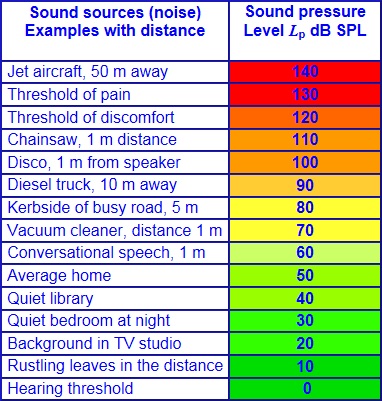

Loudness refers to how you perceive audible sounds. Two sounds that have equal intensity are not necessarily equally loud. Also, the intensity of a sound at 100 dB is one billion times more powerful compared to a sound at 10 dB. This means that a sound at 20 dB is 10 times more intense than a sound at 10 dB. Instead, the intensity of a sound grows very fast. The decibel scale is logarithmic, which means that loudness is not directly proportional to sound intensity. Sound intensity is the amount of sound energy in a confined space. How loud something sounds to you is not the same as the actual intensity of that sound. For more information, visit NIOSH’s website. The time estimates listed in the “Typical Response” column are based on the NIOSH exchange rate of 3 dB. Hearing loss possible in less than 2 minutes Hearing loss possible in less than 5 minutes The maximum volume level for personal listening devices a very loud radio, stereo, or television and loud entertainment venues (such as nightclubs, bars, and rock concerts) Sounds at these dB levels typically don’t cause any hearing damage.ĭamage to hearing possible after 2 hours of exposureĭamage to hearing possible after about 50 minutes of exposureĪpproaching subway train, car horn at 16 feet (5 meters), and sporting events (such as hockey playoffs and football games) Typical Response (after routine or repeated exposure) Sounds and Noises Everyday Sounds and NoisesĪverage Sound Level (measured in decibels)


 0 kommentar(er)
0 kommentar(er)
